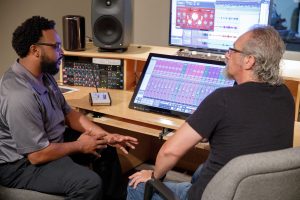
The University of Alabama is now the place where technical engineering skills and musical talent meet.
The musical audio engineering degree, housed in the College of Engineering in collaboration with the School of Music, offers a balance between the two disciplines to prepare students for careers involving technical aspects of music.
“This is a collaboration between two colleges for a degree program. I don’t know that we’ve ever done that on this campus,” said Dr. Tim Haskew, electrical and computer engineering department head.
Students who pursue this degree will learn about recording studio operations, live recording environments, equipment use and the signal processing necessary to become trained audio engineers. Students must take a mixture of foundational engineering courses, like physics, electronics and calculus, as well as traditional music courses, like performance, history and theory, to earn their degrees.
Haskew said the idea is to graduate students who can fully understand how to design, maintain and operate performance and recording equipment and are musically trained to know how technical aspects can be applied in a creative context. He sees this degree path as an opportunity for students who want to be an engineer but also have a passion for the arts.
“To our knowledge, this is the first degree program of its kind in the country that literally has a balance between musical training and engineering, having a full core curriculum between both disciplines,” said Charles “Skip” Snead, director of the School of Music.
The program will be capped at 60 students who must audition for the School of Music to be accepted. Most of the courses are already established in the respective departments, and only one new engineering class will be added. The degree requires a total of 126 credit hours.
Learn more about the new degree by reading the full article on the UA news site.